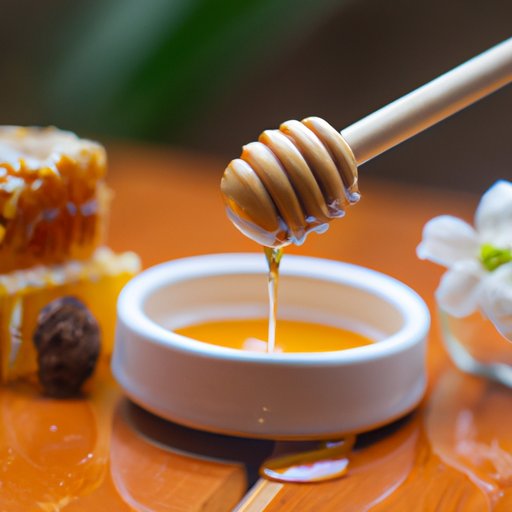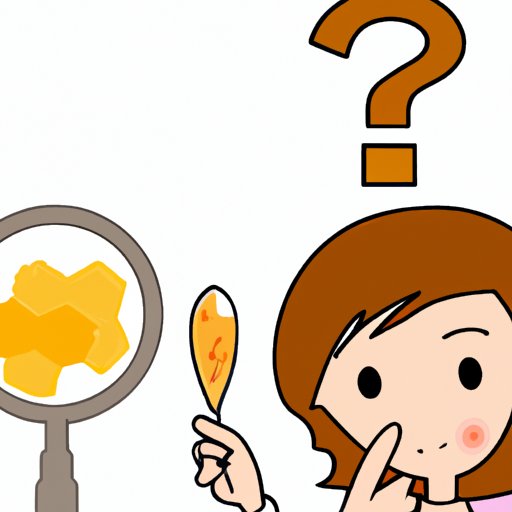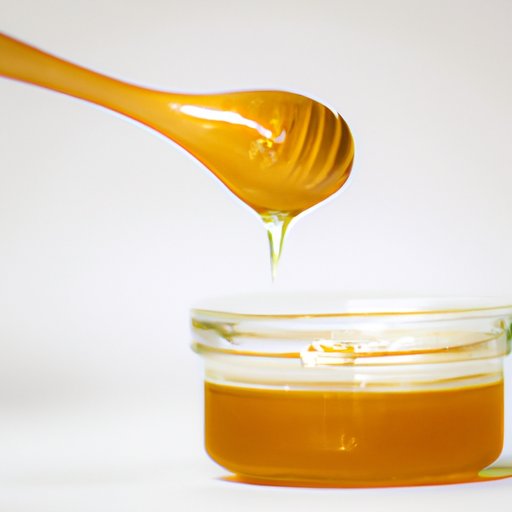Introduction
Honey is a staple ingredient in many homes around the world. It’s used to sweeten drinks, add flavour to food and even as a natural remedy for sore throats and other ailments. But is honey healthy? This article explores the potential health benefits of honey, its nutritional profile, different types of honey and their benefits, as well as the potential risks of eating too much honey.
Investigating the Health Benefits of Honey
When it comes to the potential health benefits of honey, there has been a variety of research studies conducted over the years. For example, a 2015 study published in Nutrition Journal found that honey can reduce inflammation and improve antioxidant status when consumed in moderate amounts. The study also notes that honey can help improve cholesterol levels and blood pressure.
In addition, a 2019 study published in Frontiers in Nutrition suggests that honey may be beneficial for gut health. The study found that honey could help reduce inflammation in the gut, improve digestion, and even promote the growth of beneficial bacteria.

Examining the Nutritional Profile of Honey
Honey is a source of several essential vitamins and minerals, including vitamin C, vitamin B6, magnesium, potassium, zinc, and iron. It also contains small amounts of protein and carbohydrates.
Honey is also rich in antioxidants, which are compounds that can help protect your cells from damage caused by free radicals. Studies have also suggested that honey may have anti-bacterial and anti-fungal properties, which could help fight infections.
Exploring the Different Types of Honey and their Health Benefits
There are different types of honey available, each with its own unique health benefits. Here is a look at some of the most popular varieties:
Raw Honey
Raw honey is honey that has not been pasteurized or processed. It is usually darker in color than regular honey and is believed to have higher levels of antioxidants and beneficial enzymes. Raw honey is also thought to have anti-inflammatory and anti-bacterial properties.
Manuka Honey
Manuka honey is produced in New Zealand and Australia and is known for its healing properties. According to a 2013 study published in Evidence-Based Complementary and Alternative Medicine, Manuka honey has been shown to have “anti-inflammatory, anti-microbial, and wound healing activities.”
Other Varieties
In addition to raw and Manuka honey, there are other varieties of honey available, such as wildflower, buckwheat, and orange blossom. Each type has its own unique flavor and nutritional profile, so it’s worth exploring different types of honey to find one that suits your tastes.
Is Honey Healthy or Unhealthy?
When it comes to deciding whether honey is healthy or unhealthy, it’s important to consider both the potential benefits and risks. On the plus side, honey is a natural sweetener with a variety of vitamins and minerals, as well as antioxidants and other beneficial compounds. On the downside, honey is high in sugar and calories, so it should be consumed in moderation.
According to the Harvard School of Public Health, women should limit their daily intake of added sugars to no more than 6 teaspoons (24 grams) per day, while men should limit their intake to 9 teaspoons (36 grams). So if you’re using honey as a sweetener, it’s important to keep track of how much you’re consuming.

How to Incorporate Honey Into a Balanced Diet
If you’re looking to incorporate honey into your diet, it’s best to do so in moderation. The American Heart Association recommends limiting added sugars to no more than 25 grams per day for women, and 36 grams per day for men. That means you should aim to consume no more than 1 to 2 tablespoons (15 to 30 grams) of honey per day.
When using honey as a sweetener, try to opt for raw or Manuka honey, as these varieties are believed to have higher levels of beneficial compounds. You can also use honey to add flavor to foods and beverages, such as oatmeal, smoothies, and tea.

Understanding the Potential Risks of Eating Too Much Honey
While honey is generally considered safe to consume, there are some potential risks associated with eating too much honey. Consuming large amounts of honey can cause an upset stomach, diarrhea, and bloating. In addition, honey is high in calories and sugar, so it’s important to watch your intake if you’re trying to lose weight.
It’s also important to note that honey is not suitable for infants under the age of 12 months, as it can contain harmful bacteria that can cause botulism in young children. If you’re giving honey to an older child, make sure to supervise them closely and follow the recommended serving size.
Conclusion
In conclusion, honey is a natural sweetener with a variety of vitamins and minerals, as well as antioxidants and other beneficial compounds. While it can be incorporated into a healthy diet in moderation, it’s important to be aware of the potential risks of eating too much honey, such as an upset stomach, bloating, and weight gain. By understanding the nutritional profile and potential health benefits of honey, you can enjoy it as part of a balanced diet.
(Note: Is this article not meeting your expectations? Do you have knowledge or insights to share? Unlock new opportunities and expand your reach by joining our authors team. Click Registration to join us and share your expertise with our readers.)
